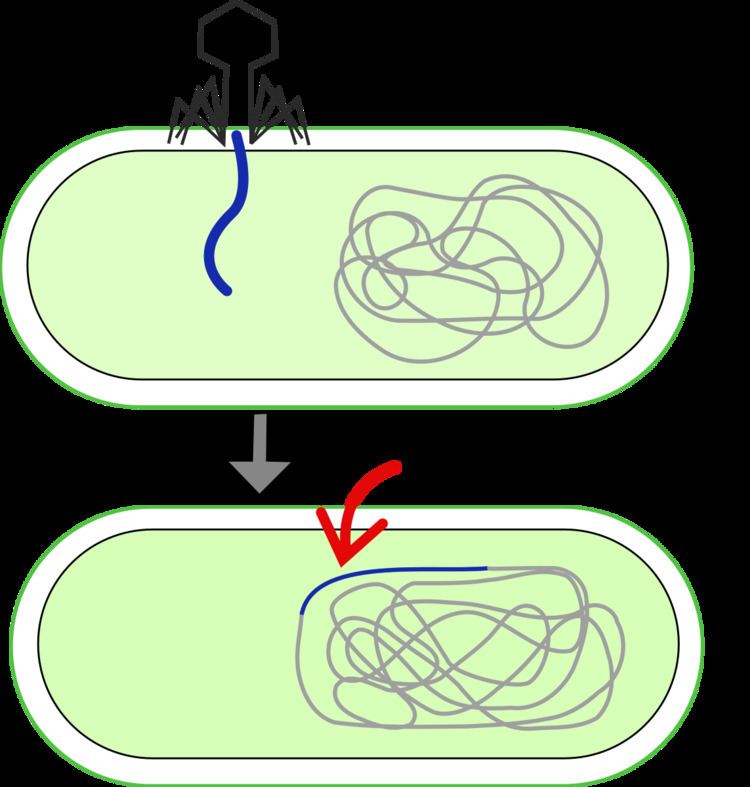 | ||
A prophage is a bacteriophage (often shortened to "phage") genome inserted and integrated into the circular bacterial DNA chromosome or existing as an extrachromosomal plasmid. This is a latent form of a phage, in which the viral genes are present in the bacterium without causing disruption of the bacterial cell. Pro means ''before'' , so , prophage means the stage of a virus in the form of genome inserted into host DNA before attaining its real form inside host.
Contents
Prophage induction
Upon detection of host cell damage, such as UV light or certain chemicals, the prophage is excised from the bacterial chromosome in a process called prophage induction. After induction, viral replication begins via the Lytic Cycle. In the lytic cycle, the virus commandeers the cell's reproductive machinery. The cell may fill with new viruses until it lyses or bursts, or it may release the new viruses one at a time in a reverse endocytotic process. The period from infection to lysis is termed the latent period. A virus following a lytic cycle is called a virulent virus. Prophages are important agents of horizontal gene transfer, and are considered part of the mobilome. All families of bacterial viruses with circular (single-stranded or double-stranded) DNA genomes or replicating their genomes through a circular intermediate (e.g., Caudovirales) have temperate members.
Zygotic induction
If a target cell doesn't have the same prophage, upon infection by a phage the lytic pathway is immediately activated. This phenomenon is called Zygotic induction.
